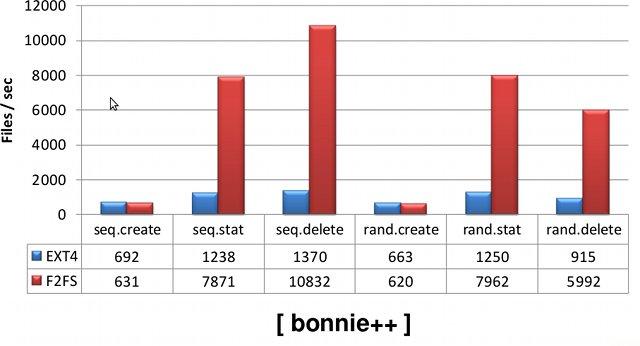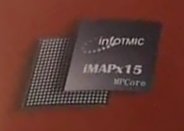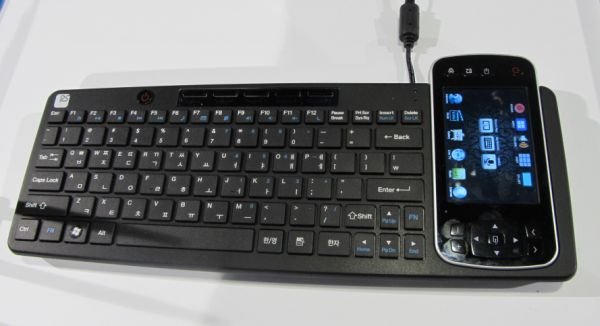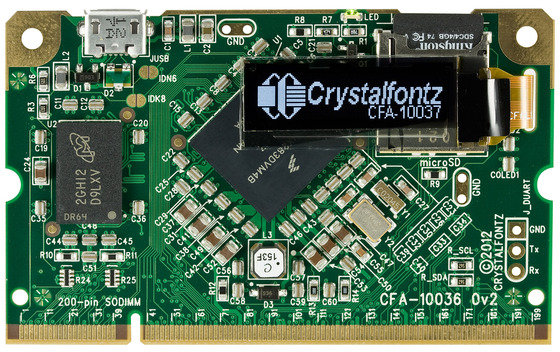Joo-Young Hwang, principal engineer at Samsung, presents F2FS (Flash-Friendly File System), a new file system designed for storage in mobile devices at the Embedded Linux Conference in Barcelona, Spain, on November 5, 2012. Abstract: Recent mobile devices adopt various flash storages as a primary storage. File system support for those flash storages is a must for flash device performance and lifespan. I will present a new file system, called F2FS, designed for mobile flash storages. F2FS is designed considering the characteristics of the underlying flash storage which has flash translation layer (FTL). F2FS outperforms EXT4, which is a popular file system for Android phones, in most of benchmarks. I will describe motivation, design, and implementation of the file system, then show performance comparison data with EXT4. Target audiences are those who are interested in file system support for flash storages such as eMMC and SSD. Kernel and file system expertise […]
Modular Graphics on Embedded ARM – ELCE 2012
Philipp Zabel, kernel developer at Pengutronix, discusses about graphics and video support for Linux on embedded SoCs at Embedded Linux Conference Europe 2012. Abstract: Porting Linux to new ARM based application processors has recently become easier than ever: the kernel gained many new frameworks like common-clock, oftree and pinmux. However, things get complicated when it comes to high end embedded graphics units.Those graphics systems tend to be composed of a multitude of on-SoC functional blocks that can operate on shared graphics buffers and video signals, as well as off-SoC encoder/converter chips that can be mixed and matched with any SoC.The old framebuffer is certainly not enough for today’s hardware any more, while modern frameworks like KMS and DRM have their own hassles on non-PC style graphics systems.The talk outlines issues we found while working on graphics and video support for the MX53 and MX6 CPUs and gives suggestions for possible […]
Embedded Linux Boot Time Optimizations – ELCE 2012
Alexandre Belloni, embedded Linux engineer and trainer at Adeneo Embedded, gives a presentation about different techniques to optimize boot time for Embedded Linux at ELCE 2012. He also explains how they’ve measured the boot time. Abstract: A common problem faced when embedding Linux is the long boot time before the system is functional. There are many ways to improve boot up time. For a particular project, we had to answer a CAN message from Linux userspace in less than 420 ms from going out of CPU reset. We will describe our methodology and the techniques we finally chose to implement in that particular use case. We will also detail how we measured the boot time efficiently. A live demo will show the results of our work. More specifically, Alexandre discusses two projects at Adeneo where boot time was critical: An automotive platform based on Freescale i.mx53 needs to reply to […]
Are We Headed for a Complexity Apocalypse in Embedded SoCs? – ELCE 2012
Free-electronics has made nearly 50 videos of Embedded Linux Conference Europe 2012 available at http://free-electrons.com/blog/elce-2012-videos/ in webM format. I’ll upload the ones I find most interesting to Youtube to make them accessible to a larger audience, and post them in this blog together with a short summary, and links to presentation slides when available. I did the same last year, so you can have a look at ELCE 2011 videos if you wish. Some 2012 videos are just an update from 2011. The first video is a keynote by Matt Locke, the Director of the Linux Developer Center at Texas Instruments, about the future of Embedded SoCs. First, he compares the block diagrams of a Power PC chip from 1995 and the latest TI OMAP 15 SoC. In the former, we can see the details of the architecture, but in the latter, we can only see an overview as it has […]
InfoTMIC iMAPx15 Dual Cortex-A5 SoC To Power $35 Android Tablets
InfoTMIC has recently launched the iMAPx15 SoC featuring 2 Cortex A5 and a Mali-400 GPU. Infotmic iMAPx15 is a low cost version of iMAPx820 that is cost optimized for tablets, and lacks features such as SATA and GPS. Charbax interviewed InfoTMIC marketing director at CES 2013, where they discussed the new processor, and showcased a 7″ Android 4.1 tablet powered by iMAPx15 that is said to cost just $35. The device is not sold on Chinese websites yet, so I could not confirm this claim. At first, I thought it would be unlikely to be the retail price, but there are some 7″ Android tablets selling for about $40 on Aliexpress (Update: The sellers at this price don’t have feedback, so those could be scams). So the $35 price tag could either be the unit price for 1K orders or the retail price in China. iMAPx15 is not listed on […]
Android Cortex A8 Keyboard / Advanced Remote for TV
Remote Solution, a small technology company based in Hong Kong South Korea, has shown off an Android 4.0 powered keyboard controlling an Android STB at CES 2013. The device is designed to be used as an advanced TV remote control, looks like a small tablet with 8 control button, and can be inserted into a full sized QWERTY keyboard for faster typing. The specifications are as follows: SoC – ARM Cortex-A8 processor @ 720 MHz (I’d guess a TI OMAP3 or Sitara processor at this freq) System Memory – 512MB RAM Storage – 2GB flash Display – 3.5″ touchscreen display (480 x 320) Connectivity – WiFi and Bluetooth Misc – IR port to be used as a universal remote. The touchscreen allows you to launch apps on your TV, move a cursor by using a virtual touch-pad, use an on-screen keyboard (when the screen is not connected to the keyboard), […]
Etnaviv Project Vivante GCxxx GPU Open Source Driver
You have most probably heard of Lima, an initiative to provide fully open source Mali-200 & Mali-400 drivers by reverse-engineering the closed source Mali GPU drivers. A separate effort, Etnaviv Project, has now started to offer open source drivers for Vivante GCxxx GPU used in SoC such as Marvell Armada 1500 (notably used in mainly Google TV platforms), Rockchip RK2918 (present in many older tablets), Freescale i.MX6 (used in newer tablets, low cost development boards, some SoMs and GK802/Hi802 mini PCs). The project is called Etnaviv. The introduction of Etnaviv Project reads as follows on the corresponding Github account: Project Etnaviv is an attempt to make an open source user-space driver for the Vivante GCxxx series of embedded GPUs. The current state of the project is experimental. It is currently only of use to developers interested in helping develop open source drivers for the hardware, reverse engineering, or in interfacing […]
Crystalfontz CFA-10036 ARM9 Embedded Module Running Linux 3.7
Crystalfontz America, a supplier of LCD and OLED display modules used in embedded systems, has launched a Kickstarter campaign to fund manufacturing and lower the cost of a system-on-module powered by Freescale i.MX28 featuring a small 128×32 OLED display, and lots of GPIOs. Here are the specs of CFA-10036 SoM: Processor – Freescale i.MX283 @ 454MHz (Optionally i.MX287) System Memory – 128 MB DDR2 (Optionally 256MB) Storage – microSD socket (Up to 64GB) Interfaces: 2x CAN interfaces 4x synchronous serial ports 10/100-Mbps 802.3 Ethernet MAC USB 2.0 OTG (connected to microUSB AB on CFA-10036. Used for development purpose) USB 2.0 host controller and PHY 5x UART plus one dedicated debug UART 2x I2C (OLED shares one of these) LCD, touch screen, keypad, and rotary encoder support RTC with 32KHz crystal (requires continuous power) 4x 32-bit timers 8x PWM 5x 12-bit 428KS/s ADC channels 1x 12 bit 2MS/s ADC channel 91 GPIO […]








